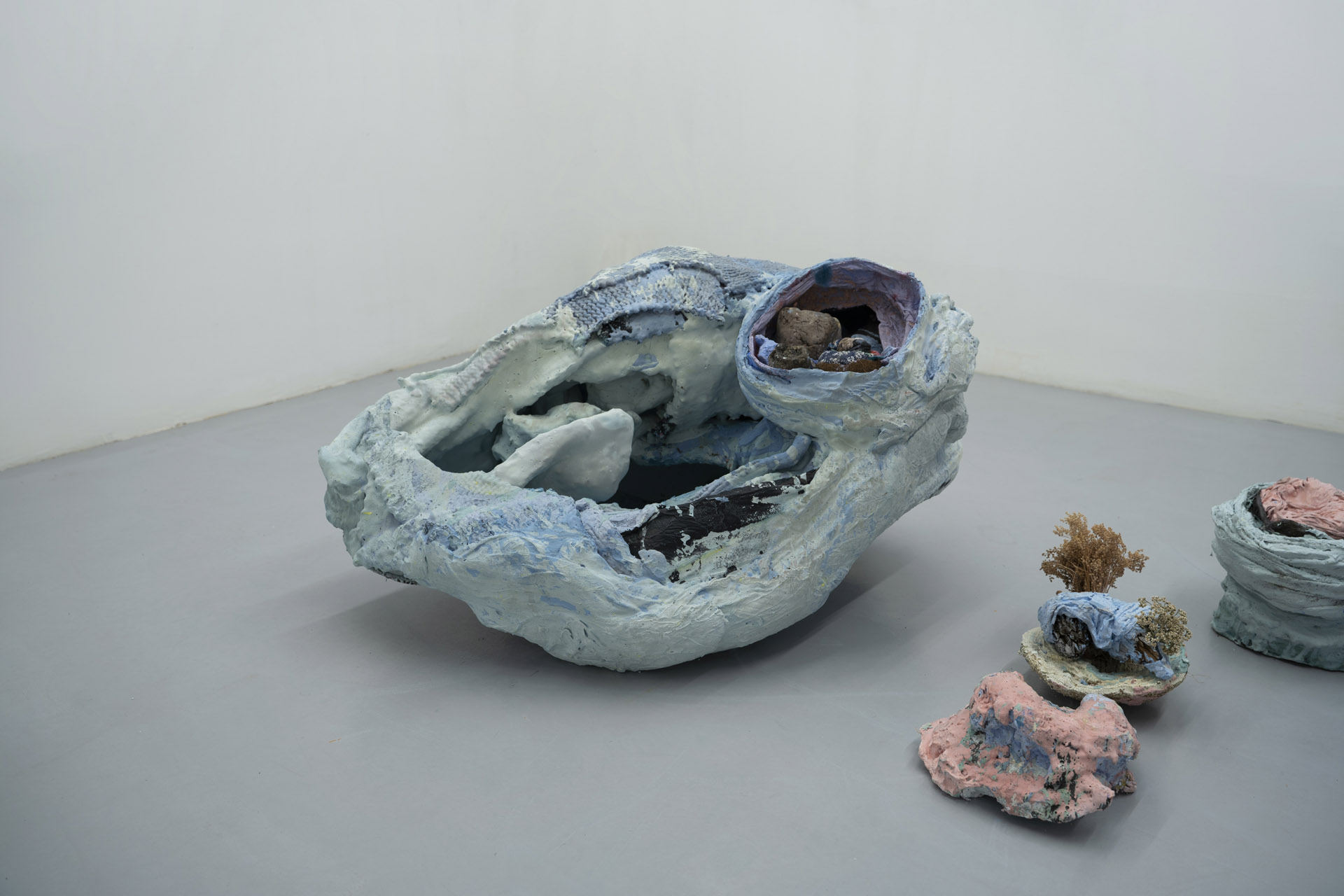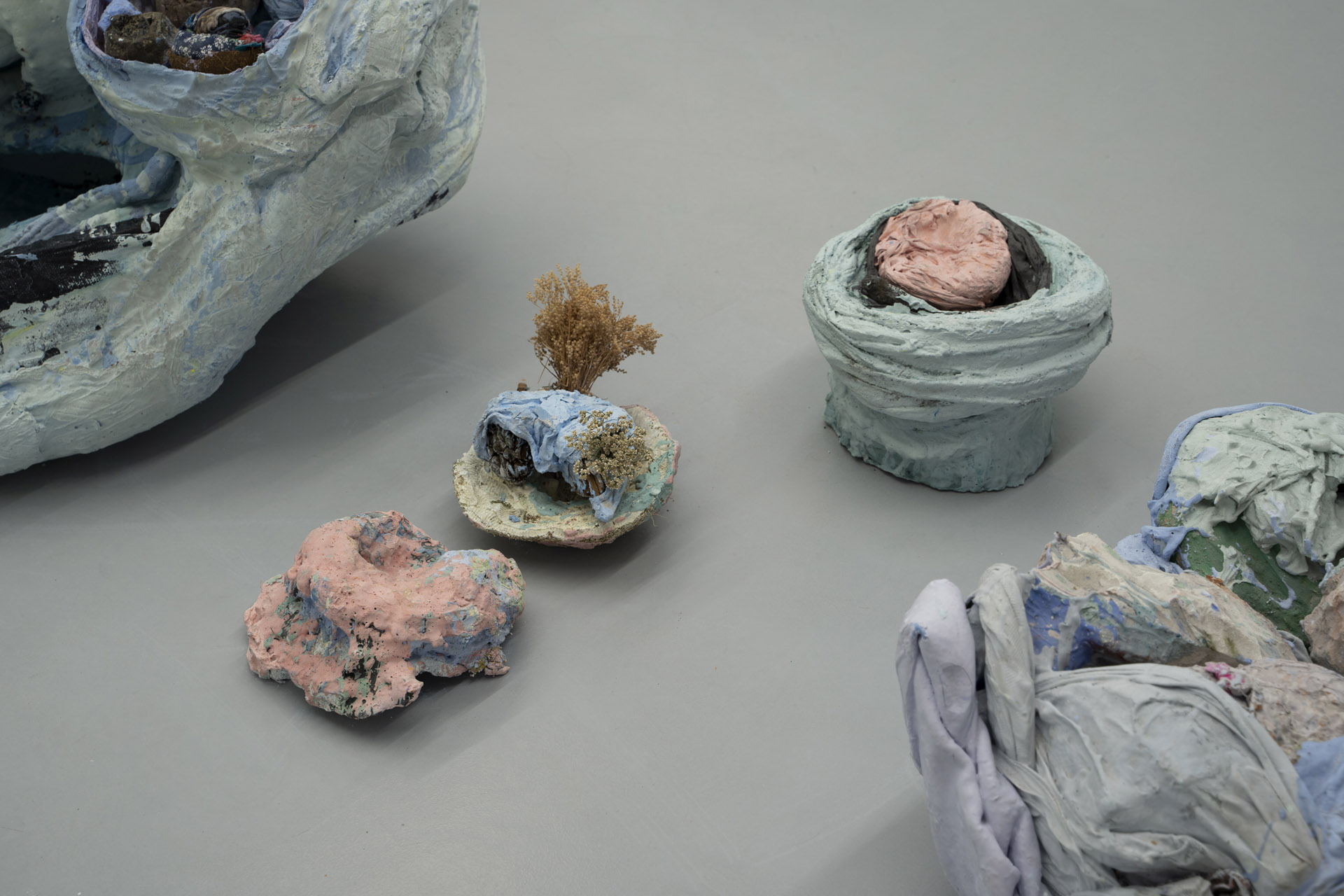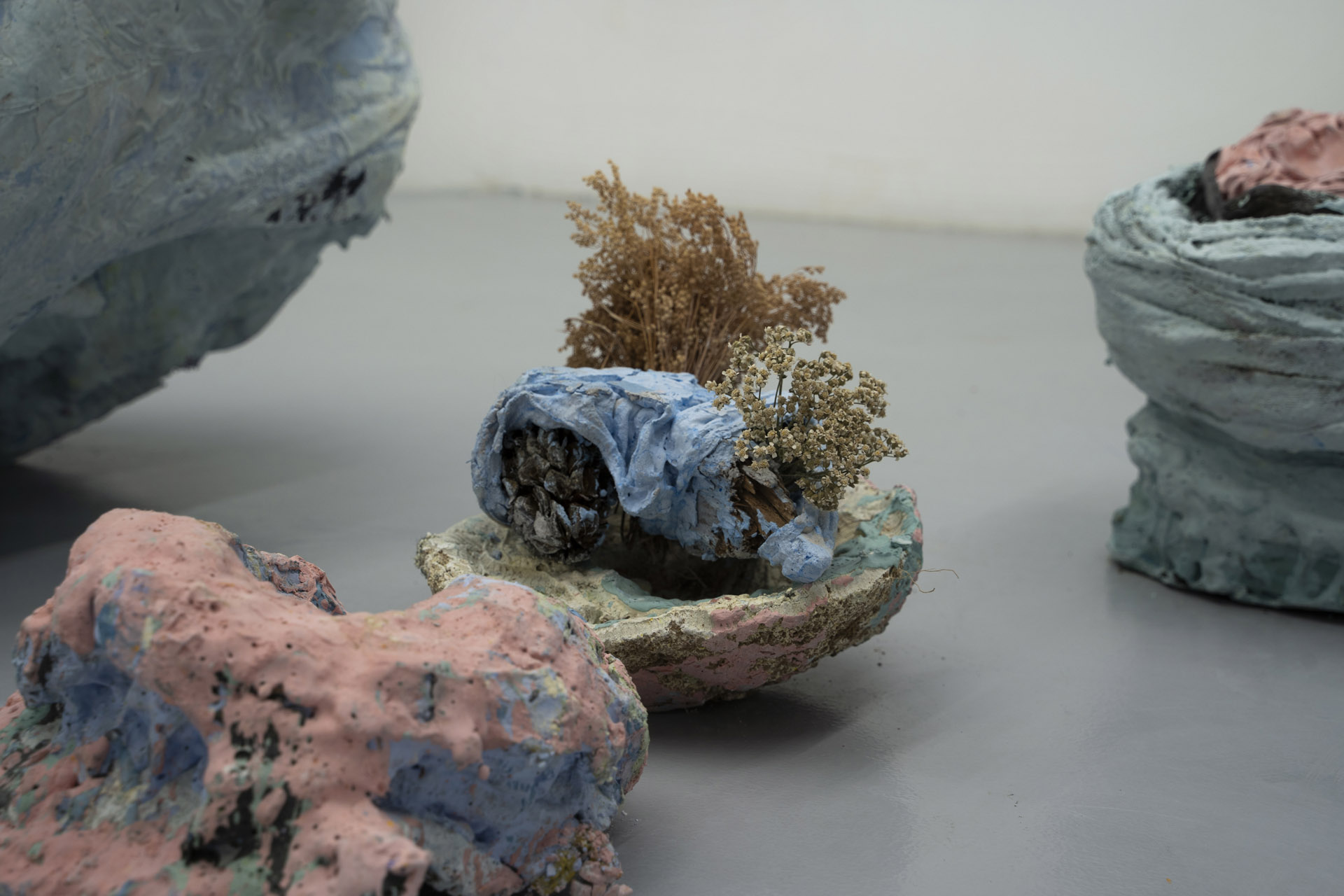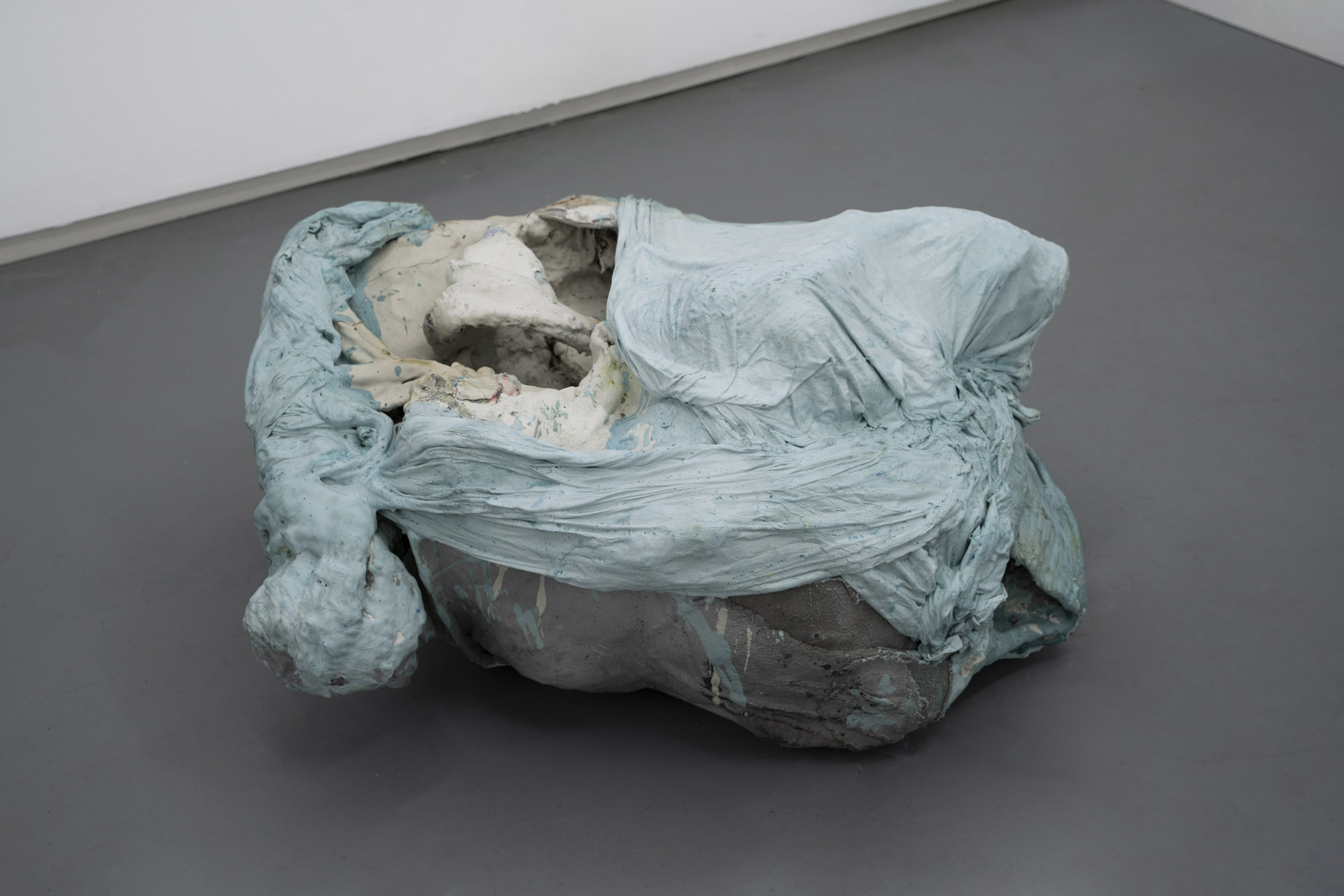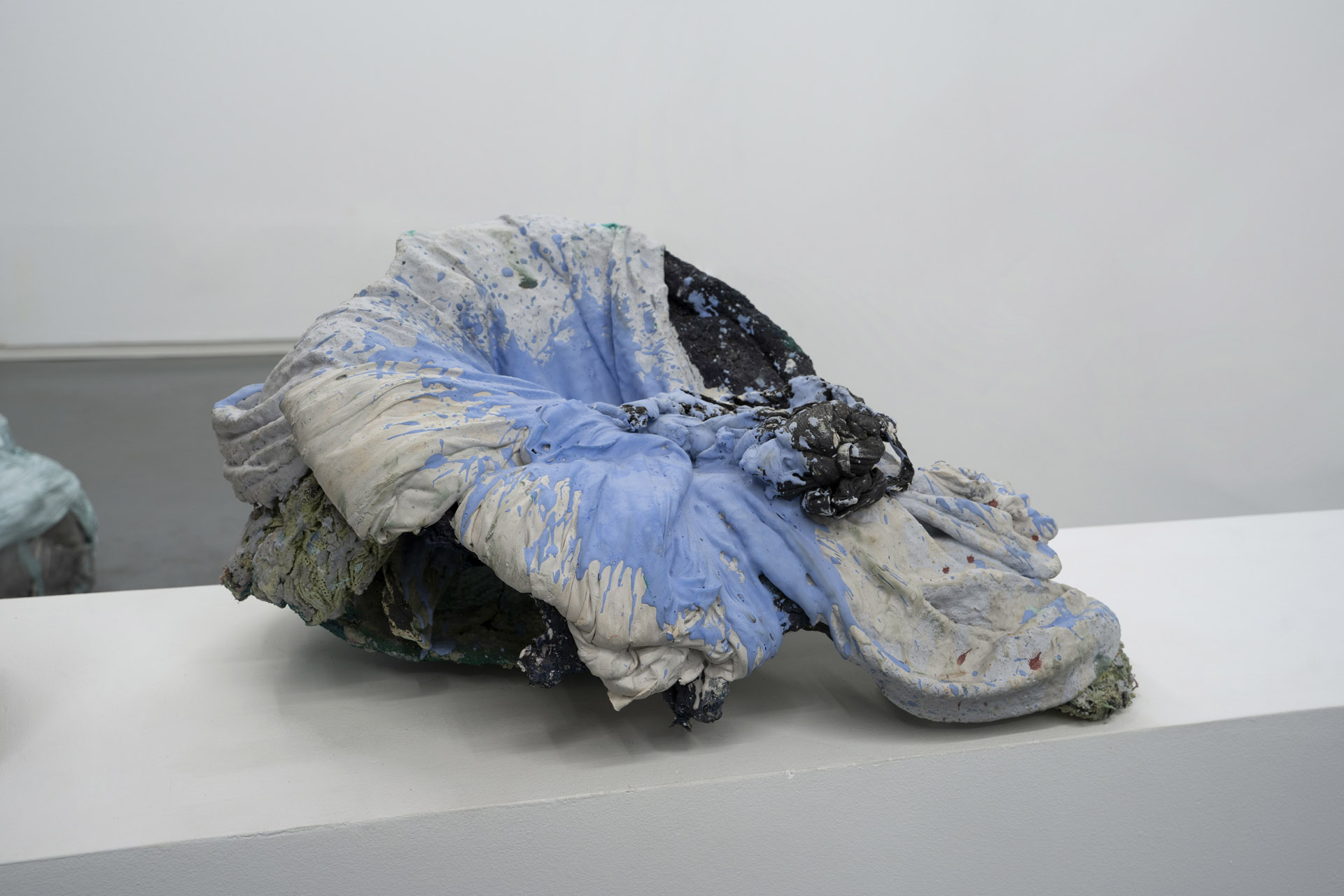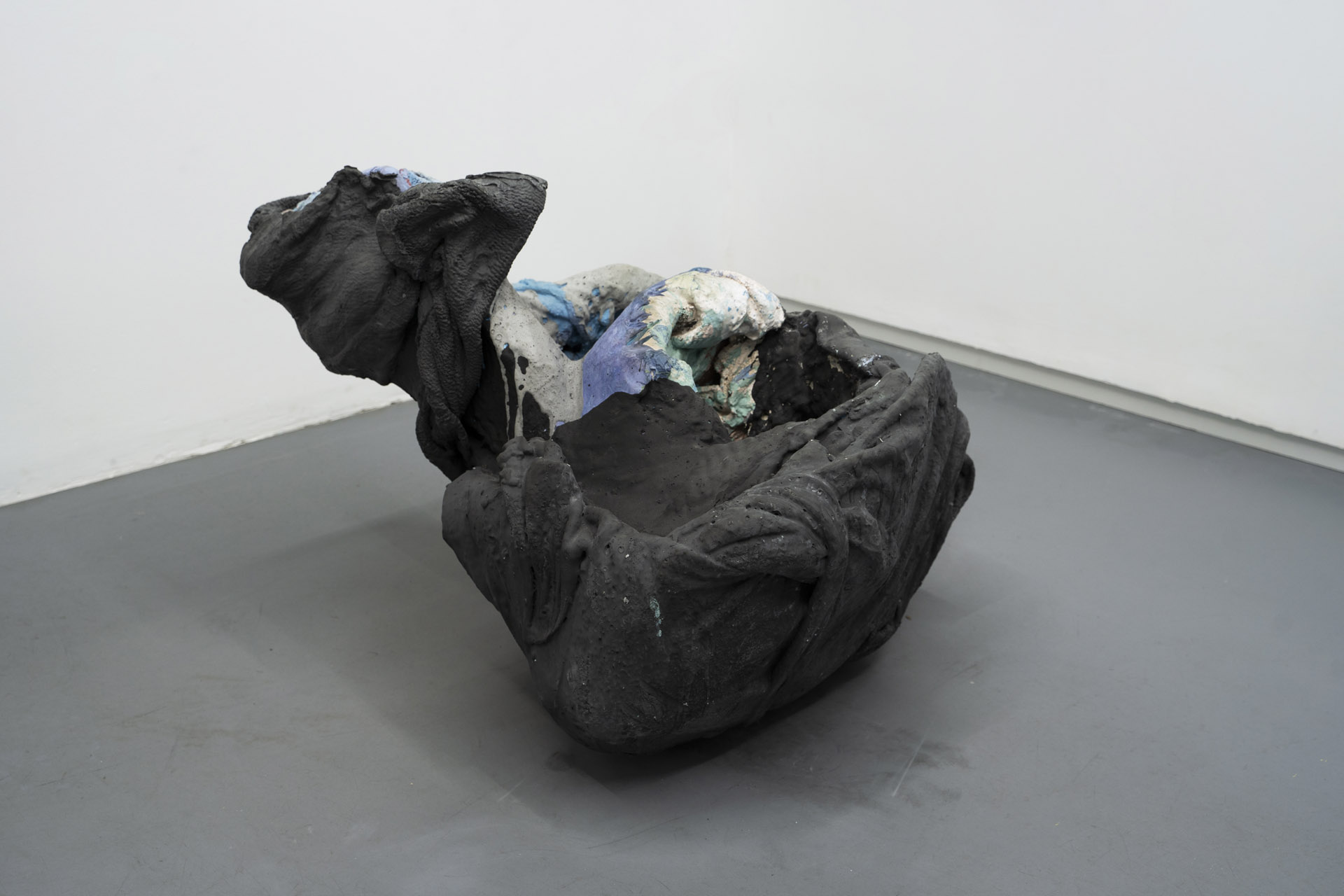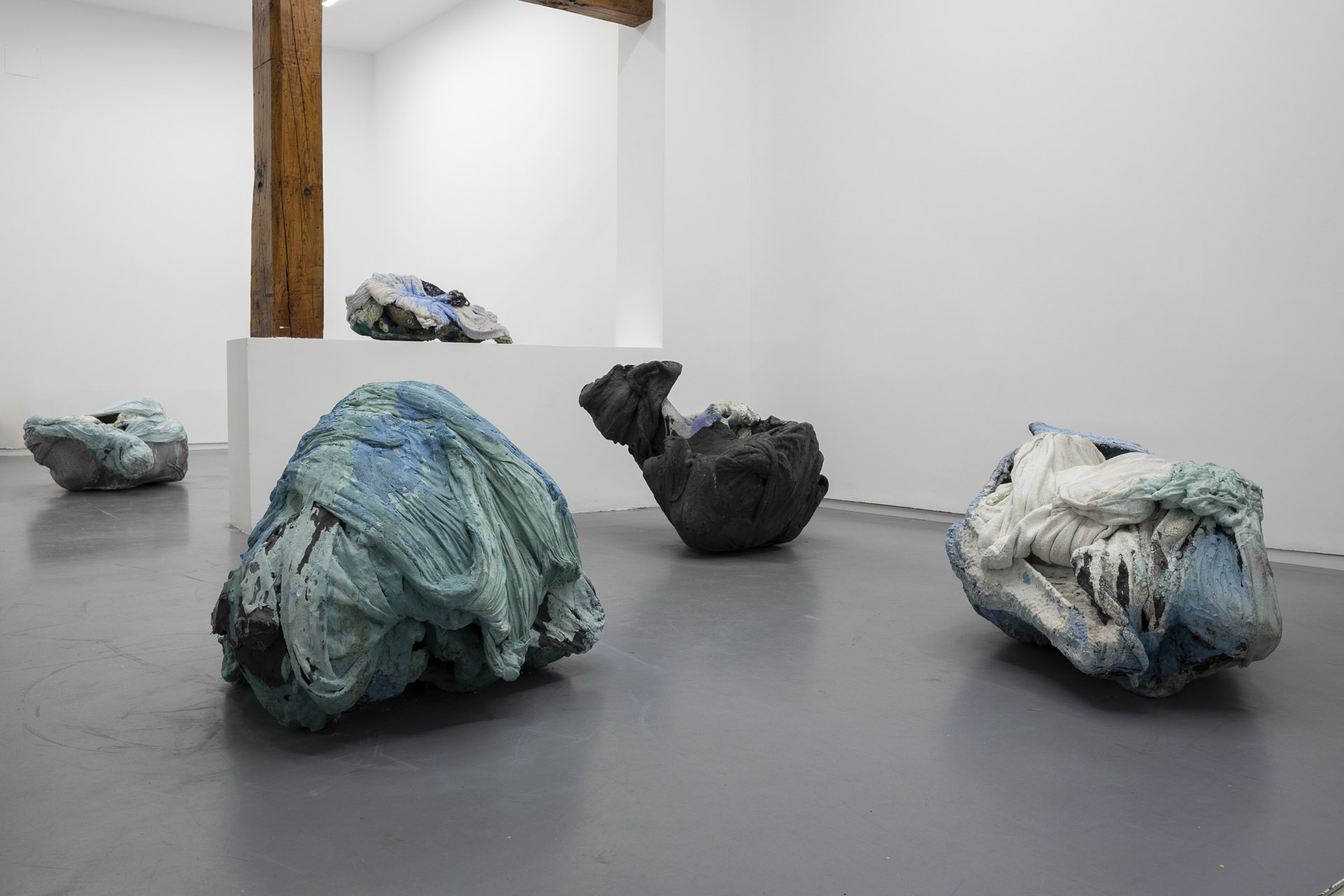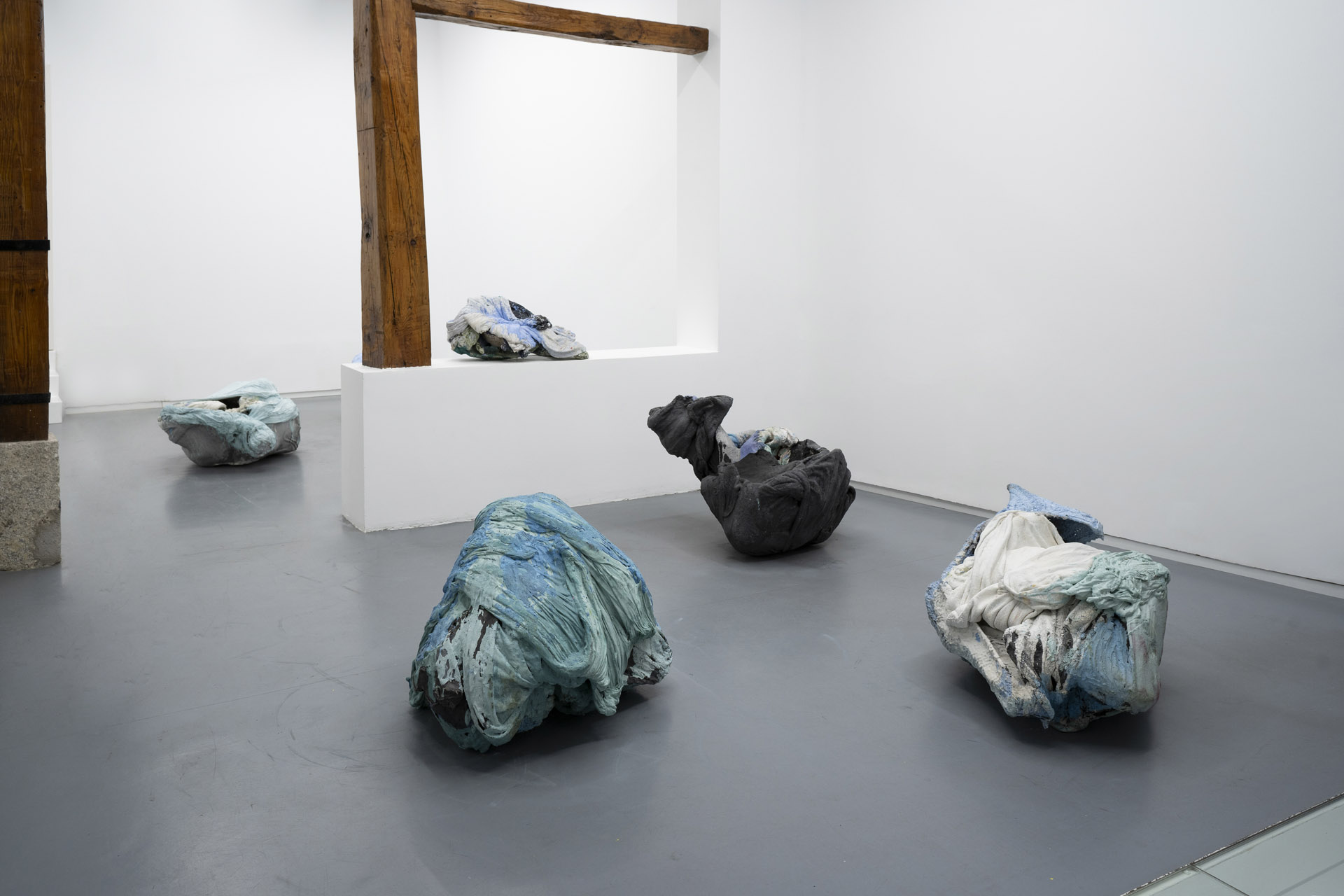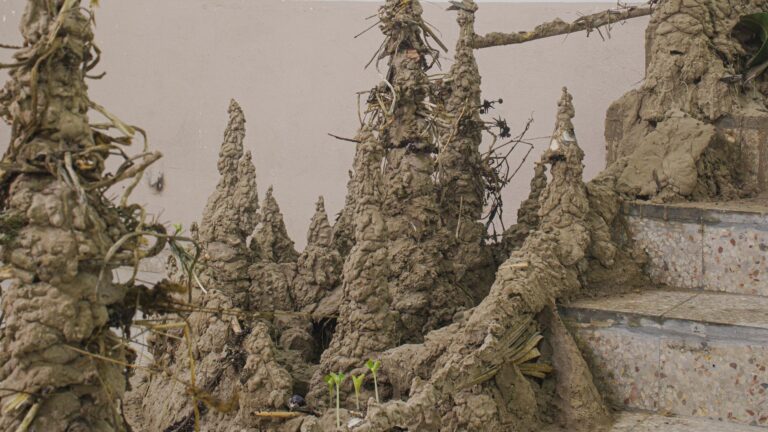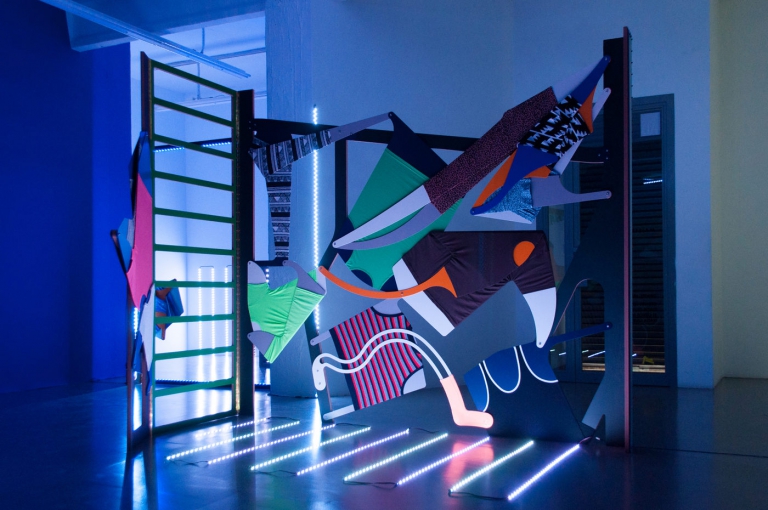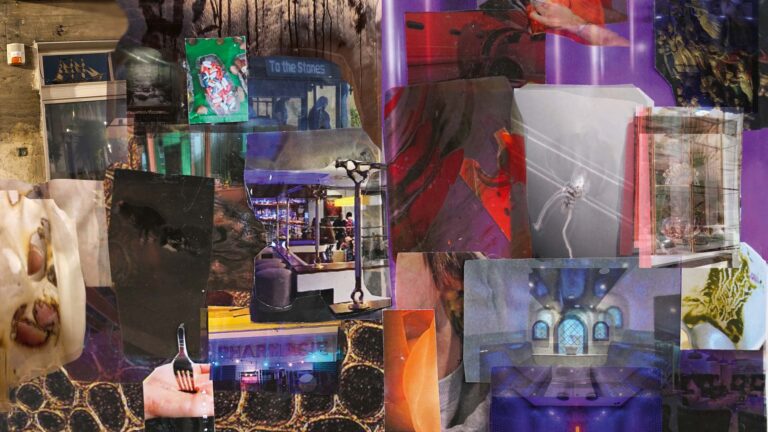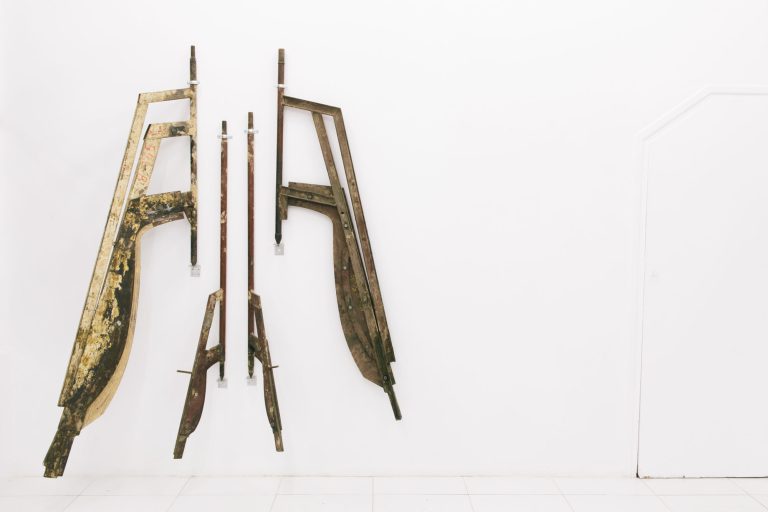Artist: Elena Aitzkoa
Exhibition title: Terraplén
Venue: Rosa Santos Gallery, Valencia, Spain
Date: September 9 – November 13, 2021
Photography: all images copyright and courtesy of the artist and Rosa Santos Gallery
The force of the whirlpool, momentarily centrifugal, seems as if it wants to condense its liquid body, exercising pressure, in order to filter through and spring from some separate channel.
An enveloping force.
I exercise pressure on shirt sleeves, tying them to the waist and, in that gesture.
I am reminded of the concavities of the river in Apodaka, where, a few days earlier, Elena had pointed out the place at which the water turns on itself and forms a whirlpool
The torsion of fabric, hardened by plaster, in a dark pastel tone, helps me to think about the whirlpool as a structural force in her sculptures, a constructive/presential force. The knot, twisting on itself, becomes a charge, a construction device able to create a cavity. Able to sustain a void and capture its light through its folds and fissures.
A body that slowly erodes matter through caressing, through moisture, in the dryness.
Erosion bringing cohesion.
A twisted scarf. Around the head, the waist, like a singing device, like a device to help the voice emerge from a cavity. A twist pushes it out from inside, gathering it in on itself, drawing its strength from the material. What’s malleable becomes hard, becoming joint.
-Estanis Comella
Elena Aitzkoa’s first sculptures gravitated around a core. Like the reflection of a continuous circling, making and unmaking, the pieces catalysed the intensity of the work carried out in a concentrated time, constrained within one day.
Impossible to forget. For me, they all have a personal identity, the independence of an individual entity. In the exhibition Cohetes at Torre de Ariz in Basauri in 2011, jointly with Kiko Pérez, the presence of her sculptures, as points of anchorage directly on the ground, gave the space the dimension of a place. An aerial view.
I would underscore the inner strength of pieces like Cruz de órgano painted with intense oils, Guerrero and Tumba campestre (2009). Since then, she has worked with conglomerates that include textiles, plaster, stones and wood, artefacts and objects from her everyday life. I also remember being surprised by the titles of the pieces: Mikel y Elena, Apodaka… names of couples and places.
Ten years later, the title of her recent exhibition Lendia Song (2021) at Azkuna Zentroa, references a lake near her village.
It seemed as if the density of those early pieces had expanded and been transferred to a new unity which is now configured in the group.
My contour – their contour
is delineated – confused in between them.
Colours that unravel the contour, allow texture to surface.
If I place myself in front of them, they speak of my skin, of my musculature.
The way they look back at me, I have no need to enter among them to sense their unity, their way of being in the world, present, without the need to impose themselves.
They still share with the early pieces their constrained, subjected body, a well-constructed inner tension.
The presentness and materialhood of her objects flew in the face of an era predominated by visuality in which the image asserted itself.
They affect me bodily, and I engage with them by means of a kind of resonance with their tactility. Elena’s sculptures contain indexical traces that enable you to reconstruct their making. Laying bare a negotiation between the visual and the tactile that is condensed in the final form of the sculptures. In this sense, they reach a highly intriguing point of tension between the image they produce and the corporality that sustains them.
A gap to be filled
A taut bun
A high bow,
in its place
Ear to the sky
Your hands form a loudspeaker
amplifying,
making my body more porous
How can I find a place in the space between your sculptures? What postures will I have to adopt?
-June Crespo




